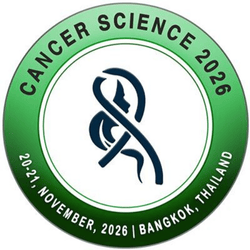Track: Advances in Breast Cancer Immunotherapy

Immunotherapy in Early-Stage Breast Cancer
Neoadjuvant and adjuvant immunotherapy
is an emerging area of research. The KEYNOTE-522 trial combined pembrolizumab
with chemotherapy in early-stage TNBC, showing improved pathological complete
response (pCR) and event-free survival. These findings suggest immunotherapy
could reduce recurrence and improve long-term outcomes when integrated earlier
in treatment. However, further studies are needed to identify which early-stage
patients will benefit most and how to manage potential immune-related adverse
events in a curative-intent setting.
Combining Immunotherapy with
Chemotherapy
Chemotherapy can enhance immunotherapy
response by increasing tumor antigen presentation and immune activation.
Studies like IMpassion130 and KEYNOTE-355 used taxane-based regimens with
checkpoint inhibitors, improving survival in TNBC. Research is ongoing into
optimal chemo-immunotherapy combinations and dosing schedules. Novel strategies
include pairing immunotherapy with PARP inhibitors, radiotherapy, or
angiogenesis inhibitors, which may further sensitize tumors and enhance
outcomes, especially in immune-excluded or PD-L1-negative patients.
Cancer Vaccines in Breast Cancer
Therapeutic cancer vaccines are being
investigated as a way to stimulate anti-tumor immunity in breast cancer. Unlike
prophylactic vaccines, these target tumor-associated antigens (e.g., HER2,
MUC1, CEA). Studies such as NeuVax (nelipepimut-S) have shown safety, but mixed
efficacy. Newer vaccines use neoantigen targets and mRNA platforms (like
COVID-19 vaccines), showing promise in preclinical models. Clinical trials are
ongoing to evaluate vaccines as monotherapy or in combination with checkpoint
inhibitors in early and metastatic settings.
CAR-T and Adoptive Cell Therapies
While CAR-T cell therapy is
established in hematologic malignancies, its application in breast cancer is
still in early-phase trials. Researchers are engineering T cells to target
HER2, MUC1, or other breast-specific antigens. Challenges include tumor heterogeneity,
safety concerns (e.g., cytokine release syndrome), and limited T-cell
infiltration in solid tumors. Combination strategies and regional delivery
methods are under investigation to overcome the immunosuppressive tumor
microenvironment and improve cell therapy efficacy.
Role of the Tumor Microenvironment
(TME)
The tumor microenvironment plays a
significant role in immunotherapy resistance. Breast tumors often contain
immunosuppressive cells like regulatory T cells (Tregs), M2 macrophages, and
myeloid-derived suppressor cells (MDSCs) that inhibit T-cell activity. New
approaches aim to “reprogram” the TME using agents that target CSF1R, IDO1, or
VEGF pathways, making tumors more responsive to immunotherapy. Modulating the
TME may enhance checkpoint inhibitor efficacy and convert immunologically
“cold” tumors to “hot.”
Scientific Highlights
- Cancer Research
- Cancer Symptoms and Causes
- Types of Cancer
- Screening & Diagnosis for Cancer
- Cancer Biology and Genetics
- Therapies for Cancer Treatment
- Cancer and Oncology Nursing
- Cancer - Clinical trials
- Breast Cancer and Treatments
- HER2-Positive Breast Cancer
- Breast Cancer Surgery
- Radiology and Oncology
- Oncology Nursing & Patient Care Models
- COVID-19 Impact on Cancer
- Advances in Breast Cancer Immunotherapy
- Liquid Biopsies in Early Cancer Detection
- Robotic-Assisted Breast Cancer Surgery
- Advanced Cancer Therapy
- Genomics and Cancer Biomarkers


